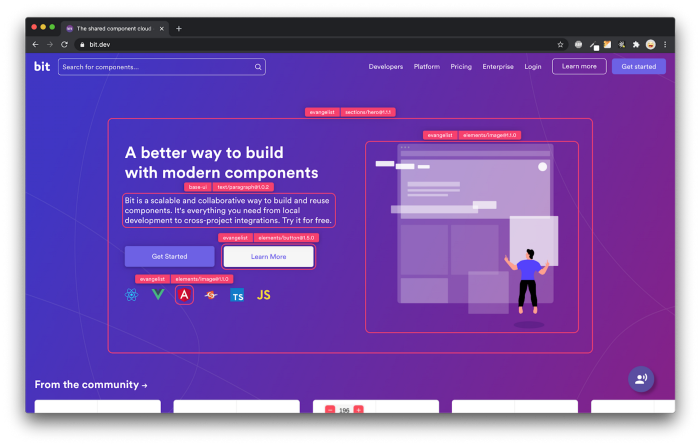

7 Best Practices for Implementing a Micro Frontend Architecture
source link: https://blog.bitsrc.io/7-best-practices-for-implementing-a-micro-frontend-architecture-36cd39a9046
Go to the source link to view the article. You can view the picture content, updated content and better typesetting reading experience. If the link is broken, please click the button below to view the snapshot at that time.

7 Best Practices for Implementing a Micro Frontend Architecture

Best Practices
Micro frontends are an architectural style where a single application is built as a composition of small, autonomous frontend apps. This approach allows for a more modular, maintainable, and scalable application. Here are some best practices for implementing a micro frontend architecture for your application:
- Establish clear boundaries between frontend apps: Each frontend app should have a clear set of responsibilities and functionality, and should not overlap with other frontend apps. This helps to ensure that each app is loosely coupled and can be developed and deployed independently.
- Use a common integration layer: A common integration layer should be used to manage the communication and coordination between the different frontend apps. This could be something like a shared library or an API gateway.
- Implement a consistent design system: A consistent design system ensures that the different frontend apps look and feel like a cohesive whole, even though they may be developed by different teams. This can be achieved through the use of a shared design system library or by enforcing strict design guidelines.
- Use a build and deployment pipeline: A build and deployment pipeline allows for continuous integration and delivery of the frontend apps. This can help to speed up the development process and reduce the risk of introducing breaking changes.
- Monitor and log errors consistently: It is important to have a consistent approach to monitoring and logging errors across all frontend apps. This can help to identify and fix issues quickly and prevent them from occurring in the future.
- Use feature flags for experimentation: Feature flags allow for the safe testing of new features in a production environment. This can be especially useful in a micro frontend architecture where different teams may be working on different features.
- Use a contract testing framework: A contract testing framework can be used to ensure that the different frontend apps are working correctly together. This can help to prevent issues from arising due to changes made to one frontend app breaking the functionality of another.
By following these best practices, you can implement a micro frontend architecture for your application that is scalable, maintainable, and easy to develop and deploy.
Build apps with reusable components like Lego
Bit’s open-source tool help 250,000+ devs to build apps with components.
Turn any UI, feature, or page into a reusable component — and share it across your applications. It’s easier to collaborate and build faster.
Split apps into components to make app development easier, and enjoy the best experience for the workflows you want:
→ Micro-Frontends
→ Design System
→ Code-Sharing and reuse
→ Monorepo
Recommend
About Joyk
Aggregate valuable and interesting links.
Joyk means Joy of geeK
